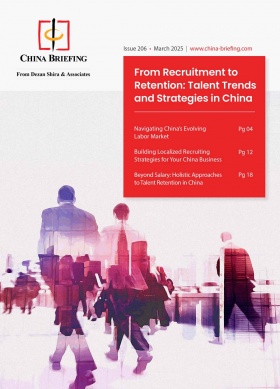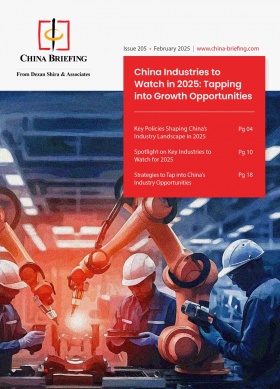China’s Strategy for Advancing High-End Medical Devices in 2025
China’s latest policy for high-end medical devices signals a major push to accelerate industry innovation and global competitiveness. The 10 new measures prioritize breakthrough technologies such as AI-powered diagnostics and surgical robotics, improve regulatory efficiency, and open new pathways for product development, market entry, and strategic partnerships. For foreign and domestic firms alike, the policy creates a more dynamic and innovation-friendly environment amid China’s rapidly expanding healthcare market.
On July 3, 2025, China’s National Medical Products Administration (NMPA) officially released the Announcement on Optimizing Whole-Life-Cycle Regulation to Support Innovative Development of High-End Medical Devices (Announcement No. 63 of 2025; hereinafter referred to as the “Policy”). It outlines 10 regulatory measures aimed at accelerating the development and approval of domestically pioneered and internationally competitive medical technologies, including AI-powered devices and medical robots.
The Policy marks a strategic move by Chinese authorities to upgrade the country’s high-end medical device industry, with a focus on fostering innovation, improving regulatory efficiency, and aligning with international standards. It introduces improvements across the product life cycle—from classification and standards development to streamlined approval processes and enhanced post-market supervision—creating new opportunities for both domestic and foreign medical device enterprises operating in China.
Key objectives for China high-end medical devices
The 10 Measures introduced by the NMPA aim to establish a more supportive, efficient, and science-based regulatory framework for high-end medical devices in China. The key objectives are as follows:
- Support the development of domestically pioneered and globally competitive medical devices: The policy prioritizes technologies with significant clinical value and international leadership potential, including surgical and rehabilitation robots, AI-powered diagnostic systems, advanced imaging equipment, and novel biomaterials.
- Optimize the entire life cycle of medical devices: Regulatory improvements span the entire process—from R&D and product classification to registration, marketing approval, post-market surveillance, and international expansion. The measures reflect China’s intenon to enhance innovation capacity, safeguard clinical quality, and improve the global competitiveness of its high-end medical device industry.
Regulatory enhancements at each stage
Innovation and classification
To better accommodate emerging technologies, the NMPA has refined the classification and naming principles for high-end medical devices. Specific classification guidance has been developed for medical robots, including surgical and rehabilitation robots, forming a shared expert consensus on naming conventions. Further research is being conducted on the regulatory categorization of novel technologies such as AI-based large models, synthetic biomaterials, pre-processing imaging software, and workflow optimization systems.
The classification of these products will be dynamically adjusted based on their technological maturity. In addition, the government will study and clarify the regulatory approach for core components of advanced imaging equipment and medical robots to ensure regulatory clarity and consistency.
Standards system
China is accelerating the development and issuance of standards to match the pace of innovation in the medical device sector. Key areas include:
- Fast-tracking the publication of standards for technologies such as exoskeleton robots and radionuclide imaging equipment;
- Advancing the formulation and revision of basic and general standards for AI medical devices, medical robots, and advanced imaging systems; and
- Promoting the establishment of specialized technical committees for standardization in these fields.
In parallel, the NMPA will enhance research on standards for additive manufacturing biomaterials, flexible electrodes used in brain-computer interfaces, and synthetic biological materials. Efforts are also being made to build standard data sets for AI-powered medical devices, and to apply fast-track procedures for urgently needed standards based on regulatory demand.
Approval and registration process
The announcement introduces a more efficient and targeted review process for innovative high-end medical devices:
- Optimized special approval pathways remain in place for products that are first-of-their-kind in China, globally advanced, and of clear clinical significance. This includes enhanced technical guidance during R&D and early registration stages.
- Change registration for AI-based products has been simplified—particularly when the core algorithm remains unchanged, even if performance is optimized.
- New evaluation criteria are being developed for AI performance benchmarking using datasets and for proving platform equivalency when the same AI function is registered across different platforms.
- Revised technical review guidance is being prepared for a wide range of products, including laparoscopic systems, MRI systems, dental bone grafts, and vascular implants. AI, biophotonics, and biochip technologies are also being studied for their role in evaluating product performance and safety.
- Electronic instructions for use (eIFUs) are being explored as a future regulatory requirement for high-end active medical devices.
Communication and consultation mechanisms
To improve regulatory transparency and support for enterprises, the NMPA will:
- Enhance guidance and communication related to product testing, clinical evaluation, and registration dossier requirements;
- Advance expert consultation earlier in the product development process to help companies navigate complex regulatory requirements;
- Expand the expert pool to include professionals in active devices, materials science, and clinical applications. A long-term mechanism for expert engagement will support regulatory decision-making on frontier technologies; and
- Pilot early-stage inspection systems and phased inspections to help firms identify and correct systemic issues before final submission.
Post-market supervision
Post-marketing oversight will be strengthened through several initiatives:
- Targeted regulatory consultations will be held for innovative products, especially those concentrated in specific provinces, to identify potenial risks and enhance localized supervision.
- New inspection guidelines will be introduced for next-generation technologies such as carbon ion/proton therapy systems, animal-derived heart valves, 3D-printed orthopedic implants, and surgical robots.
- National inspector recruitment and training programs will be intenified, alongside provincial quality management system verification processes to improve oversight capabilities at all administrative levels.
Quality and safety monitoring
To strengthen the oversight of high-end medical devices, NMPA is set to implement a comprehensive and proactive regulatory framework. Central to this initiative is the active monitoring of device performance, with a particular focus on the entire lifespan of high-end active devices. Medical institutions will be tasked with carrying out routine maintenance checks, especially for complex technologies such as surgical robots and advanced imaging equipment, ensuring their continued safety and functionality in clinical settings.
In parallel, the NMPA will issue detailed guidance for manufacturers to support robust post-market research. This will include the application of evidence-based methodologies and the use of advanced pharmacovigilance tools to detect and interpret adverse event signals more effectively. A key part of this strategy involves defining specific types of adverse events associated with AI-driven and imaging devices and establishing standardized reporting protocols.
These measures aim to enhance the quality and consistency of safety data collected from the field.
Furthermore, pilot programs will be launched to explore new models of active post-market surveillance. These will initially focus on high-risk categories, such as cardiovascular implants, and will involve the creation of dedicated databases to track device performance and safety trends over time. Collectively, these initiatives reflect a shift toward more dynamic and data-driven regulation, designed to keep pace with the rapid evolution of medical technology.
Implications for foreign and domestic companies
The introduction of these 10 Measures present significant strategic opportunities for both domestic and foreign medical device enterprises operating in China:
- Streamlined market access for foreign companies: With clearer classification guidelines, accelerated approval pathways, and enhanced regulatory transparency, foreign firms now face fewer administrative hurdles in bringing innovative products—particularly those featuring artificial intelligence, robotics, or novel biomaterials—to the Chinese market. Companies offering globally advanced, yet unmet clinical solutions may benefit from priority review under the “special approval” channels.
- Competitive edge for joint ventures and R&D-focused entities: The measures specifically encourage innovation at the product development stage, providing strong incentives for companies with a robust research and development pipeline. This opens strategic opportunities for cross-border joint ventures, especially those combining foreign technological expertise with local manufacturing and regulatory know-how.
- Favorable environment for high-tech segments: China’s emphasis on emerging technologies—such as surgical and rehabilitation robots, AI-powered diagnostic platforms, and synthetic biomaterials—aligns closely with global trends in precision medicine and smart healthcare. Both foreign and domestic manufacturers in these domains are well-positioned to capitalize on regulatory fast-tracking, government-led standardization efforts, and increasing demand from China’s expanding healthcare sector.
- Increased compliance expectations: At the same time, the regulatory overhaul also entails more stringent post-market obligations, including risk-based inspections, real-world evidence collection, and adverse event monitoring. Companies must proactively invest in compliance infrastructure and local partnerships to ensure sustainable market participation.
Conclusion
China’s Announcement from the NMPA marks a pivotal shift in the country’s regulatory strategy, signaling its ambition to become a global powerhouse in high-end medical technology.
By enhancing the entire product life cycle—from innovation and classification to post-market safety surveillance—the Chinese government aims to cultivate a more agile, science-driven, and internationally aligned regulatory ecosystem. Companies engaged in medical robotics, AI diagnostics, imaging systems, and bioengineered devices should closely track the implementation of these measures, as they offer substantial potential to shorten time-to-market and increase global competitiveness.
Firms looking to enter or expand within China’s medical device landscape must align with these reforms, leverage fast-track mechanisms and remain agile in responding to evolving regulatory expectations. In doing so, they can not only gain early access to one of the world’s largest healthcare markets but also help shape the future of medical innovation in China and beyond.
About Us
China Briefing is one of five regional Asia Briefing publications, supported by Dezan Shira & Associates. For a complimentary subscription to China Briefing’s content products, please click here.
Dezan Shira & Associates assists foreign investors into China and has done so since 1992 through offices in Beijing, Tianjin, Dalian, Qingdao, Shanghai, Hangzhou, Ningbo, Suzhou, Guangzhou, Haikou, Zhongshan, Shenzhen, and Hong Kong. We also have offices in Vietnam, Indonesia, Singapore, United States, Germany, Italy, India, and Dubai (UAE) and partner firms assisting foreign investors in The Philippines, Malaysia, Thailand, Bangladesh, and Australia. For assistance in China, please contact the firm at china@dezshira.com or visit our website at www.dezshira.com.
- Previous Article Albanese’s Second Visit to China: What Was Achieved?
- Next Article







